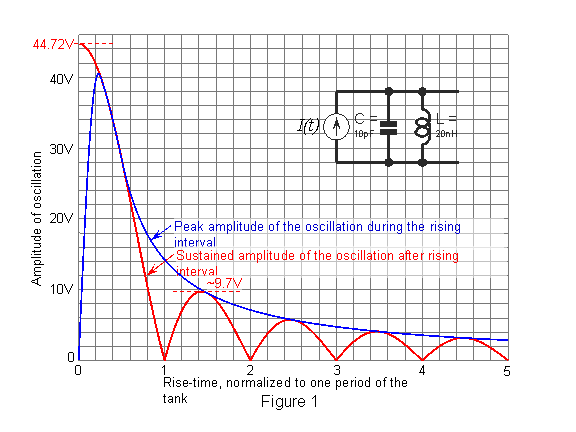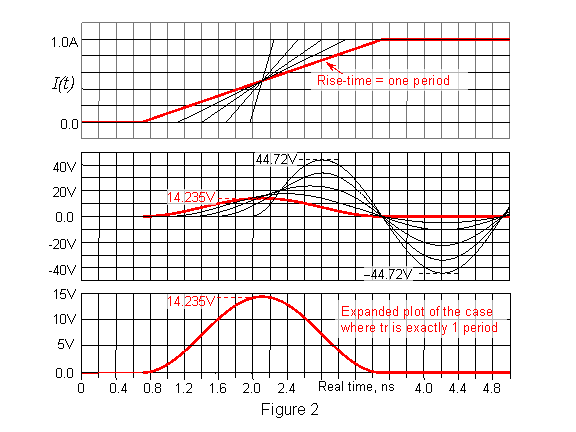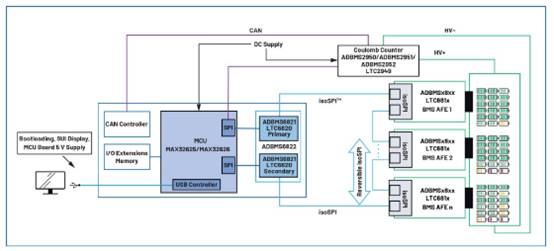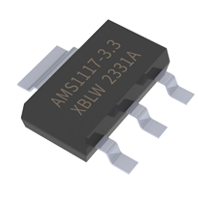文章转自ADI官网,版权归属原作者一切
Back in her small apartment, Niku tossed two units of ‘MycoPro’ into the hyperphase and settled to watching the top stories on the TransGlobal Network (TGN, Channel 28.20.20). She was feeling upbeat. After weeks of orientation at ADI, she’d just been given her first real assignment as a Product Originator. From the initial discussions, it didn’t appear that her contributions to this mixed-signal ASIC, a new type of monitor of deep-ocean conditions for the International Oceanic Authority, would require much in the way of “original” design; but she was excited at the prospect of finally doing something productive, working under the guidance of her team leader, Jeff Rawlings, another protégé of Dr. Leif.
It was Leif who first alerted him to Niku’s peculiarly dogged interest in some little-studied subtleties of HF oscillators. Until recently, Jeff had been too preoccupied to ask about this work. But when the opportunity arose, she enthusiastically shared her notes of the step-by-step questioning she’d applied to the start-up behavior of the basic two-transistor differential topology she was exploring. He was immediately impressed by her diligence in this self-appointed enterprise, and encouraged her to present a summary of her work at “Daedalus Days,” the series of meetings that Dr. Leif had instituted, years ago, and had named after the mythical Greek inventor. After that chat, Jeff was even more certain that her penetrating curiosity and insatiable appetite for pursuing basic insights would be valuable assets for their new project. Asking questions is the beginning of wisdom.
The majority of the other team members were Fusers. While they were experienced and efficient, and the older ones were broadly informed about the IC business, their satisfaction came largely from providing a quick solution to a field application, using the large library of pre-characterized, time-proven cells. Most of the Fusers had scant interest in topological exploration, save for one of them: Mauricio Pegna, hired several months before Niku. Rico showed great promise as an eager treasure-seeker in the vast and rich forests of analog cell invention, and was clearly destined for an early promotion. A remote relative, Guido Pegna, once taught Physics at the University of Caligari in Sardinia. Prof. Pegna, an exceptional teacher; offered a boldly different perspective on science—one that was, he said: “less worrying, less dramatic, more fun, more human, more delightful.” Among his legacies was a fascinating site on the old Inter-Net: www.pegna.com.
While picking away at her nutritional but totally uninspiring dinner, Niku watched the latest reports of the disappearing polar ice. The erosion of habitat for polar bears in the Arctic, and the confusing loss of landmarks for penguins and other migratory birds in Antarctica, who for eons had regarded these stable regions as their home and birthright, was troubling enough. But disruptions of that sort were eclipsed by the sheer magnitude of the threat to human life and property posed by the ever-rising sea level.
As a kid, during the overture to the 21st century, Niku had heard plenty of talking heads indulging in endless exchanges of blame: across national borders, between political parties, and between various agencies charged with caring for the environment. But little was done to reverse these trends. For all the bickering, pollutants and greenhouse gases were still on the rise as late as 2016. Now, in the mid ’20s, at least they were stable, but at levels far too high for complacency. only when low-lying coastal regions began to be inundated did world governments finally grasp the ominous reality of the science. After years of glory, the older areas of Venice were the first to succumb, and were soon abandoned.
These shocking events were followed by the asteroid strike in August of 2017. Fortunately for humanity, after a terrifyingly blazing journey on an uncertain and wobbly trajectory, it had burned itself down to the size of a one-seat commutobile when it hit a remote region of Antarctica at a fairly steep angle. The heat equivalent of its massive kinetic energy had greatly accelerated the melting of the ice and the rising sea levels. That event led to the formation of the Coalition of Terrestrial Governments, and galvanized its member-nations into drafting laws which earlier would have been regarded as quite untenable. Several smaller nations declared martial law, strictly rationed supplies, and then applied repressive penalties for any kind of wastage. There were sporadic demonstrations, but they soon fizzled out.
Now, only eight years later, the outrage and tensions had eased, in a seemingly miraculous—certainly astonishing—reversal of history. The disparate and entrenched ideological stances of the leading nations were dissolving into acts of genuine cooperation. The first fragile signs of a shift in attitude toward the arbitrariness and irrationality of nationalism were becoming evident. Another big shake-up: In 2018, NASA, ESA and other space agencies were obliged to accept a new charter: to put space exploration on hold, until Earth, this most important and precious of planets, was clearly on its way to recovering from the ravages and excesses of more than a century of unmitigated abuse.
Understandably, most scientists and engineers in these agencies, and many academicians, were violently opposed to this directive; but the dire urgency of the prevailing circumstances soon forced them to come around. These reorganized agencies, and new ones such as the IOA, had, for about seven years now, applied their best minds to Project Milton—“Restoring Our Common Habitat and Heritage.” The notion of freedom had taken on a new, more vital and self-disciplined meaning, and not a decade too soon.
Removing the visionizer headband, and putting aside her food tray, Niku settled down for the evening. Saying RAISE! to the SyntheDown pillow unit, it fine-tuned the personalized presets interactively to conform even more comfortably to her contours. She reached for the thin blue Actablet which kept the details of her studies. Propping it up on her raised knees, it came alive at her touch. She struggled to refocus her mind for the evening’s work: to be well prepared for next week’s Daedalus Day presentation, she needed to get these notes, and the many results, into some semblance of order.
But almost immediately, Marcoloonie, her lithe and intelligent Abyssinian kitten, was vying for attention. Plunking himself on her chest, with no room for negotiation, he offered his wide eyes in place of the screen—an old trick of cats. Succumbing to the hypnosis, she planted her hands on his warm fur. Nose to nose, they shared air, and her racing mind dropped down to first gear. Half-waking sometime later, she found Marco asleep, curled in a contented ball at her feet. She sighed LOWER! to the pillow unit.
* * *
At mid-morning, Dr. Leif encountered her in the hall. “Hi, Niku! How are you? Y’know, I’ve been meaning for some time to ask you about the rest of your oscillator story. Do you have time for a good cup of coffee over at GalaxyBux?”
“Sure, Dr. Leif. I’ve been trying to put my notes into a logical order for the Daedelus talk next week, but so far I haven’t made much progress. A chat with you would help a lot. Let me just pop back to the lab for my Actablet.”
As they arrived at the coffee shop, the Greeter did its usual thing, except that now it also recognized Niku: “Good morning, Dr. Leif, Dr. Yeng. I trust your day is going well. We have a great special this morning. It’s….” They didn’t wait to hear about the day’s special, nor the ad that was sure to follow. Finding a table for four, Niku sat beside her mentor, to more easily share the screen of her ’tablet. With coffee ordered, a touch brought up the usual gallery of icons. She selected one labeled Oscar.
“Oscar?” quizzed the amused senior. “Why Oscar?”
“Oh, I’ve become quite fond of this little circuit, so I gave him a name. Actually, the title I’ll use for the talk is “Oscar Awakes”, to emphasize that it’s about the brief start-up phase, and how it’s dominated by circuit noise in a well-designed and well-balanced circuit. But I’m afraid I got sidetracked into other issues.”
“Ah-ha. I see. So, where did we leave off?”
“Well, if you remember, I was taking each step cautiously, and the last time we talked I’d gotten as far as showing that when a fast step of current, I, is applied to a parallel LC tank, the circuit behaves as a pure resistance of √(L/C), resulting in a voltage, V = I√(L/C), which persists as the non-decaying amplitude of a sinusoid, while the magnetic and dielectric energies oscillate between LI2 and CV2. Of course, that never happens in a real circuit, mostly because of the finite series resistance of the inductor. But even if the elements were ‘perfect’, some of the stored energy must be lost by radiation—mostly from the inductor, whose magnetic field, in the case of an open coil, generates an EM wave.”
“Did you try calculating the radiation loss from first principles?”
“Hmm… I haven’t given it any thought and I’m not sure I could. I’m trying to stay focused on the issue of the noise-excited start-up trajectory. I mean… there are so many other basic questions you could investigate. For example, intuition tells me that there’s a dual—the series-connected LC tank, driven by an ideal voltage source. A fast step of V would then set up a circulating current of V/√(L/C). Thinking about the Fundaments—if I may adopt your valuable idea—it couldn’t be anything else, since L and C must determine the impedance, and, from a dimensional perspective, these have to be combined as √(L/C). I don’t think one needs to demonstrate that by separate simulations.”
The coffee arrives. “Your intuitions serve you well, Niku. These kinds of non-mathematical analysis provide just one example of what I call the What Must Be philosophy. Understanding of crucial aspects of circuit design or behavior can often be gained simply by listing the known variables, then asking how the dimensional constraints can be satisfied. In the case of little Oscar’s parallel-tuned tank, you knew there has to be a voltage, V, caused by the applied current, I, which demands a relationship via impedance, because V = IZ. So there’s one What Must Be factor, right away.
“Then, when GE°E later showed you that the amplitude of the resulting sinusoid didn’t change over time, it confirmed your intuition that ‘Z’ has to be a simple resistance. You realized that there’s only one way of getting something with the dimension of resistance out of an L and a C, and that’s from their ratio L/C—although this is actually R2. After all, there is only one other simple dimensionally correct way of combining L and C—as the product, LC. This probably led you to think of two standard forms: √(L/C), which has the dimension of resistance; and √(LC), which has the dimension of time—or 1/√(LC), which has the dimension of angular frequency. One can easily arrive at these basic forms from first principles, considering the inherent dimensions of inductance and capacitance. This concern for what has to be included and what can be excluded without significant loss is philosophically related to the Principle of ‘Occam’s Razor’.”
“Mmm…?” said Niku, sipping the dark brew. “Who is Occam, and what do his shaving habits have to do with a Principle?”
“William of Ockham was a 14th-century… No, that can wait. Roughly speaking, he conjectured that when faced with two or more ways to explain some phenomenon, the most simple is usually the right one: the razor will pare away the rest. In the same spirit, faced with several ways to configure a basic circuit, in meeting some performance challenge, it often pays to use the simplest possible form. Of course, you can’t create new circuit forms, from scratch, in this way: only choose from pre-existing possibilities. The origination of topology is a daunting aspect of analog design, and the chief reason why many find it Difficult.
“Still, Occam’s Razor can nicely complement the philosophy of intuitive design, the most important aspect of which is the habit of ceaselessly asking What If? How about? Why is That? What Must Be?—that kind of question—before plunging into a detailed and time-consuming analysis that may turn out to be irrelevant or fail to contribute any useful insights.
“A simulator is an indispensable partner in telling you what will happen— with high numerical accuracy—if that is all you need to know. But after seeing what happens, your eyes are invariably opened to insights; and these lead to even more deeply-probing questions, as you’re demonstrating. Sometime, I’d like to share some personal case-histories of What Must Be reasoning. Many of them rely on elegance-driven heuristics like Occam’s Razor. But I’m anxious to hear about Oscar. What did you do next?”
“Well, this actually wasn’t the next thing I looked at, during my early studies; but I was curious and went back later to explore it. In fact, Dr. Leif, that’s my dilemma. I don’t know whether to include such details in my talk or not, because they are merely tangential to the original topic. But I will tell you about this one.
“I was curious about the effect of the rise-time, tR, of the current step. only a pulse having a rise-time of zero would generate the full I √(L/C), so I wanted to discover the relationship between the rise-time and the resulting amplitude of the tank voltage. What rise-time would cause it to be reduced by, say, 10%? What if it’s equal to a significant fraction of the period, up to or even beyond the full period? One thing was certain: for very slow rise-times—when tR is hundreds of times √(LC)—practically all of the current must flow in the inductor, generating a small voltage LdI/dt.”
“Niku,” interrupted Dr, Leif, touching her lightly on the wrist. “Y’know, these questions aren’t all that far off the beaten track. After all, in a practical oscillator, the currents coming from the driving circuit will have finite rise-times, and you might have uncovered an ‘incidental’ fact that would alter the direction of your studies—perhaps radically. The trick is knowing when to stop chasing every side-thought. You can never suppress them. Even if one’s thinking is clear and controlled, the mind will be nonetheless seething with questions continuously generated by our innate propensity for confabulation. Look, you have hardly touched your coffee. Please, take a moment to enjoy it”.
But Niku rattled on as the coffee contributed to cosmic entropy.
“Yes, I really do find it difficult to cope with all the questions and ideas for new experiments that keep coming to mind! The question about the importance of the rise-time led me to worry about the effect of the detailed wave-shape of the current step, since this obviously determines the frequency-domain spectrum of the voltage. How would my ideal, infinite-Q tank be affected by this? GE°E provides a rich assortment of forms, including the simple ramp [the PULSE source in SPICE—Ed.] and the raised-cosine form, both of which occupy a finite time; and it provides the Gaussian form, which must be truncated before t = 0, for any finite delay—though, it’s only 0.148 ppm of the final value at a time four times earlier than that needed to get 10% up the edge.
“Anyway, I thought it might be useful to explore these effects for an isolated tank, using a 20-nH inductor shunted by a 10-pF cap, which resonates at 355.88… MHz, this time using a single unit step of 1 A. As expected, the tank voltage for an extremely slow ramp is dI(t)/dt times the inductance. But I didn’t expect this…” Turning the screen of her Actablet to a better angle for Leif, she showed him the first of two sets of plots.

“Let’s see,” he pondered. “The horizontal axis (Figure 1) shows the number of periods of the tank over which the current linearly rises to 1 A; and vertically, you’re showing the peak amplitude of the oscillation both during and after the rising edge, right?” Niku nodded. “And I see that for fast-rising pulses, the stable periodic-steady-state amplitude of the sine-wave is 44.72… V, which is consistent with your √(L/C) value of 44.72… ohms. Then, as the rise-time increases, the PSS amplitude steadily falls, becoming zero when it’s exactly equal to one whole period of the tank. For slower rise times, it rises back up, to roughly 9.7 V, falling back to zero whenever the rise-time is an integer number of periods. And your second set (Figure 2) shows the actual time-domain voltages for several rise-times up to one full period. Okay. Now, what did you expect would happen?” Leif asked mischievously.

“Well, until I saw this, I expected the amplitude to simply keep on falling as tR increased. I assumed that, for a rise-time as long as one tank period, it would be already slow enough to approach the point where the voltage would be just LdI/dt, and that a 1-A step with a rise-rate of 355.88127 A/ms, when multiplied by the inductance of 20 nH, would make a rectangular voltage pulse of 7.117625 V. But the actual waveform seems to be a raised-sine. Then I realized that if a step of voltage did appear, immediately, at the foot of the current ramp, there’d be a very large capacitor current, so my ‘simple’ expectation was just a bit too simplistic! On the other hand, the measured peak voltage of 14.235… V is exactly twice my erroneously-predicted value, which happens to be exactly (1/p) ´ 44.72… V—isn’t that intriguing! So until I have all my facts together, I won’t touch on this in my talk.”
“Well, yes; but it would be more intriguing if the factor weren’t (1/p) but, say, exactly (1/7), because then you’d need a theory to explain where this new number comes from! Anyway, now that GE°E has shown you the error of your ways, I agree it wouldn’t be wise to introduce this matter, unless you know what’s going on,” said Leif, his eyes twinkling. “I understand why you’d feel uncomfortable about not being able to get to the bottom of all these details. Still, at this point, I’m going to let you—how does it go?—stew in your own juices for a while!
“However, I will mention that this is one of those times when you will need to dust off your Laplace transforms, and use paper and pencil to find out Why Is That? Though simulators are excellent tools, and fine for showing what happens, they haven’t a clue as to why. They aren’t aware, as we are, of the Fundaments, and in spite of decades of promises from the AI folks, GE°E still can’t emulate creativity in any useful way. That’s why we hire people like you, Niku, and why we use the job description Originator. But I have a question for you to mull over: Do you recognize the functional shape of your plot of PSS amplitude vs. rise-time?”
“Well, it looks like the absolute-sine-x-over-x form” Niku said, “but I don’t know why. I suppose if I could trust Occam’s Razor, that simple answer would probably be the right one”.
“Mmm. It’s not really a job for Occam, since you have only one suggestion! But it’s a smart guess. Still, why would it have that form, and what causes all those nulls? Every effect has a cause.”
His wink was the only encouragement she needed to strengthen her resolve to understand this by Daedalus Day. “Maybe I will include these analyses, after all,” she beamed, confident of her practiced ability to wield the Laplacian sword. As they left, her coffee continued its spiraling descent to ambient. Walking back to the lab, under a yellowish sky, Niku said “By the way, you still haven’t told me what the Fourth Dee of analog design is.”
“Ah, but I did,” said Dr. Leif, “only a few moments ago.”









